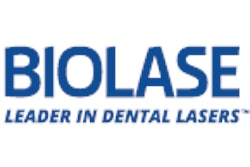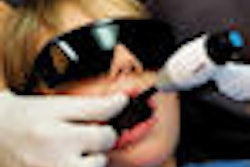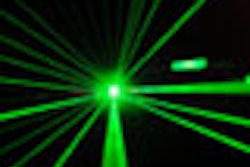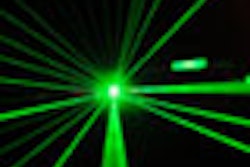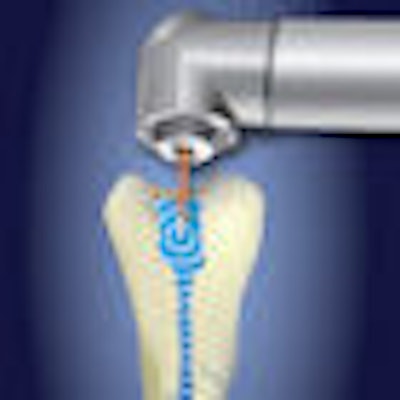
A new laser technique can clean root canals better than conventional instruments and more safely than other laser techniques, the inventors claimed at the recent World Congress of Minimally Invasive Dentistry (WCMID) in San Francisco.
A new tip they have developed for Lares Research's PowerLase sends acoustic waves into tiny, curved and otherwise inaccessible canals, said Enrico DiVito, D.D.S., and Mark Colonna, D.D.S. Using lasers can reduce the patient's discomfort and save tooth structure, so patients love them, they said.
“This is really where the future of dentistry is.”
— Enrico DiVito, D.D.S., director,
Arizona Center for Laser Dentistry
"It's unbelievable stuff," said Dr. Colonna, a Whitefish, MT, general dentist. "This has changed our lives."
But Louis Rossman, D.M.D., immediate past president of the American Association of Endodontists, noted that "the research has not shown lasers to be over and above what we're doing today."
Drs. Colonna and DiVito reported successfully using their protocol -- photon-induced photoacoustic streaming (PIPS) -- in place of filing in some canals. In other canals, they used standard techniques, but by adding PIPS were able to limit their use of files to ISO size 20, which is what they recommended to the WCMID audience.
They also recommended that dentists wanting to use the system invest in a microscope, and they demonstrated the technique using microscopes from Global Surgical.
The two used images made with scanning electron microscopy to show that they were able to completely debride and decontaminate difficult-to-reach canals. And Dr. DiVito, director of the Arizona Center for Laser Dentistry, is doing histological and other studies that he hopes will show PIPS can also kill microorganisms.
PIPS vs. the Waterlase
Research on a competing laser system for endodontics, the Waterlase from Biolase Technology, has yielded mixed results. One study showed it could kill 99.7% of Enterococcus faecalis in extracted teeth lased in a laboratory (Journal of the American Dental Association, July 2007, Vol. 138:7, pp. 992-1002). And Biolase claims the laser can kill bacteria hidden 1,000 microns into root canal walls, where irrigation cannot reach them.
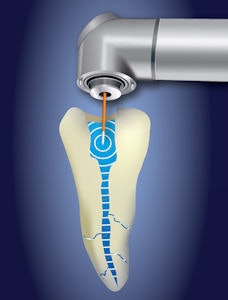 |
| In the photon-induced photoacoustic streaming technique, the canal doesn't have to be widened as much as with competing techniques because the laser tip isn't inserted as far into the canal. Image courtesy of Lares Research. |
But other studies have found it no more successful at debriding (JADA, September 2006, Vol. 137:9, pp. 1261-1266) or disinfecting (JADA, January 2006, Vol. 137:1 pp. 67-70) than conventional methods.
Drs. Colonna and DiVito claim they've gotten around a potential problem with lasers in endodontics: the heat of the laser damaging dentin. Instead of ablating debris and burning microbes, PIPS works by creating waves inside fluid in the canals. They hope this technique will kill microorganisms.
Dr. Colonna compared it to the shockwaves of a depth charge destroying a submarine. "The concussion is rupturing the wall of the submarine and then it sinks," he said.
In addition, acoustic waves move irrigant disinfectants into places they would not otherwise reach, according to the inventors.
The notion of creating acoustic waves in root canals isn't new. Biolase claims that the Waterlase debrides canals through hydrophotonics, a "powerful microagitation" created when water vapor is formed, creating bubbles that scrub the canals.
But to disinfect canals with Waterlase, the canals must be dry. In the JADA study that found the Waterlase could kill E. faecalis, researchers from Temple University and Biolase found that the laser killed the most bacteria when they dried all the fluid in the root canals. The laser was actually cooking the bacteria, not agitating them to death, they theorized.
The PIPS inventors said they are able to achieve more powerful shock waves with less energy by stripping the sheath from the shaft of the wand near the tip and using shorter pulse duration -- 50 microseconds (μs) versus 150 μs to 300 μs.
Techniques for the two systems differ as well. In the Waterlase method, after filing canals, operators introduce a series of different tips into the canal, starting at 1 mm from the apex, and gradually withdraw while firing. They make multiple passes with each tip.
Using the PIPS protocol, operators file up to ISO size 20, then use one tip that they only insert into the pulp chamber. This protocol eliminates any thermal effects at the apex, according to Dr. DiVito.
The two laser types also differ. The Waterlase is an erbium- and chromium-doped yttrium scandium gallium garnet (Er,Cr:YSGG), while the PIPS is used with a PowerLase erbium-doped yttrium aluminum garnet (Er:YAG).
Dr. Rossman, who is also a clinical professor at the University of Pennsylvania, questioned the use of any laser in endodontics. "It's a wonderful advertisement to patients, but it doesn't accomplish anything more than we are able to do with our standard instruments. Conventional hand instruments and the irrigation we use are enough to render the root canal sterile," he said. In addition, conventional root canal treatment is now relatively painless, he noted.
More research is on the way, according to Dr. DiVito. If successful, this approach would allow a more minimally invasive yet successfully efficient means of performing endodontics, he added.
Copyright © 2009 DrBicuspid.com




